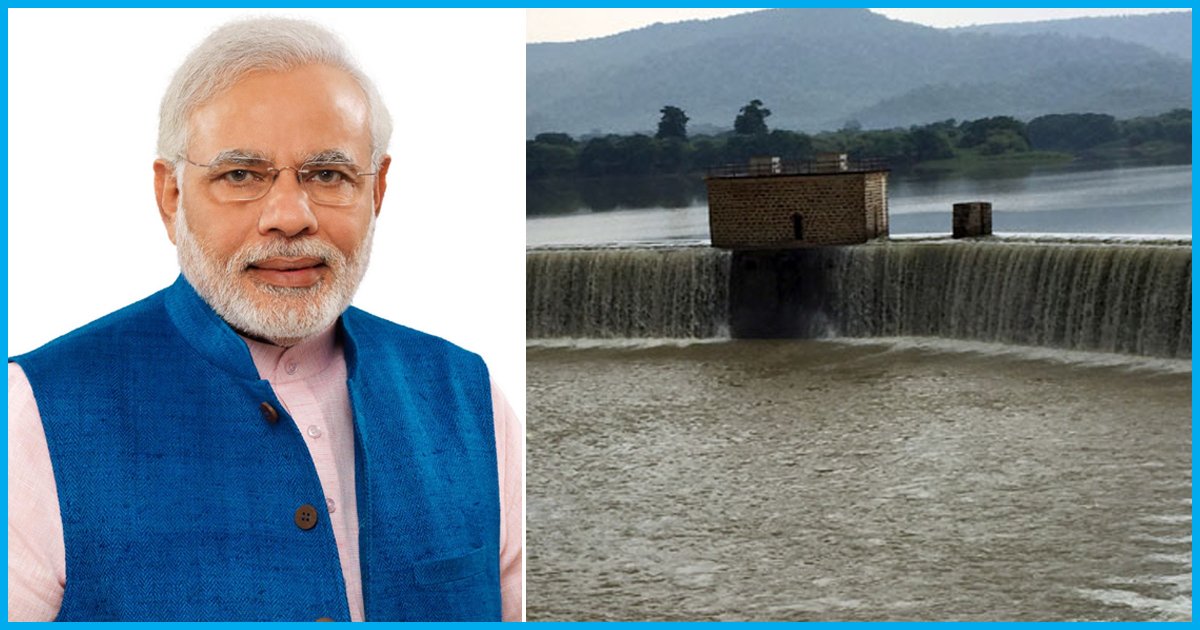PM Modi Makes Ambitious Plan To Link Major Rivers To Tackle Floods In India
In a span of one month, India will see a major scheme to connect some of the country’s biggest rivers. PM Modi intends that this ambitious project costing almost $87 billion (Rs. 5,55,593 crore) would be a giant leap towards ending deadly floods and droughts in the country, reports NDTV.
The mammoth plan entails linking nearly 60 rivers, including the mighty Ganges in the hope that it will cut farmers’ dependence on erratic monsoon rains. It will also bring millions of cultivable land under irrigation.
The scheme starts off in BJP-ruled states first
The project would involve a construction of a dam on the Ken river, also known as the Karnavati, in north-central India and a 22-km (14-mile) canal connecting it to the shallow Betwa. These rivers flow through patches of Madhya Pradesh and Uttar Pradesh which are under BJP rule. It is expected that this scheme would be the flag bearer for the entire project the Indian government has in mind.
The Prime Minister has personally supervised the clearances for the first phase of the project – which would also generate thousands of megawatts of electricity.
The government is also finishing up paperwork on projects in western India linking the Par-Tapi with the Narmada and the Daman Ganga with the Pinjal. The projects involve PM Modi’s home state of Gujarat and neighbouring Maharashtra, both also ruled by the BJP.
The river-linking projects were first proposed in 2002 by the last BJP-led government. However, it did not materialise owing to squabbles among state governments over the water-sharing contract and also the rampant red-tapeism.
This time, officials hope to start with projects that are all in BJP-ruled states will ensure smooth negotiations.
Opposition from environmentalists and wildlife enthusiasts
The 425 km long Ken flows through a tiger reserve in the valley. The government intends to clear out 6.5 percent of the forest reserve to build the dam, relocating nearly 2,000 families from 10 remote villages.
The preliminary round of clearances have been achieved, and Prime Minister Modi’s cabinet is likely to give its final go-ahead for the project within a couple of weeks.
The proposed 77-metre high (250-ft), 2-km long dam on the Ken River will submerge 9,000 hectares of mostly forest land. A big portion will come from the Panna Tiger Reserve, near the UNESCO world heritage site of Khajuraho Temple in Madhya Pradesh.
This decision of the government has invited opposition from some wildlife enthusiasts and environmentalists. They opine that even though the government feels that the only way to save the country from droughts and floods is linking the rivers, it will have an adverse impact on the ecological balance.
People in Daudhan village, not very far from the Gangau dam built by the British in 1915, are not very sure of the impact this scheme will have on their lives. With no access to electricity and other essential services, they want more information on what they will get in return for being displaced.
Experts feel the need of the hour is not one of river-linking but water conservation.
Government officials, however, opine that diverting water from rivers such as the Ganga, Godavari and Mahanadi to sparse waterways by building a clutch of dams and a network of canals is the only solution to floods and droughts. They claim that they have taken adequate measures for the safety of tigers, vultures and other wildlife.
Andhra Pradesh has been the first state in India to execute a mega river-linking project, known as ‘Pattiseema Lift Irrigation Scheme’ linking Krishna and the Godavari in West Godavari district.
Some Indian states are severely hit by the floods, and the loss of human and animal lives have been massive.Torrential rain also brought Mumbai to a standstill this week. The sad part is that this is not peculiar to this year, such calamities take place in India almost every year.
When seen in this light, the initiative was taken by the Centre, if executed correctly is indeed applaudable. But The Logical Indian hopes that the government would weigh the pros and cons of the entire scheme, look at the impact it has on the environment and only then go ahead with the plan.
 All section
All section














